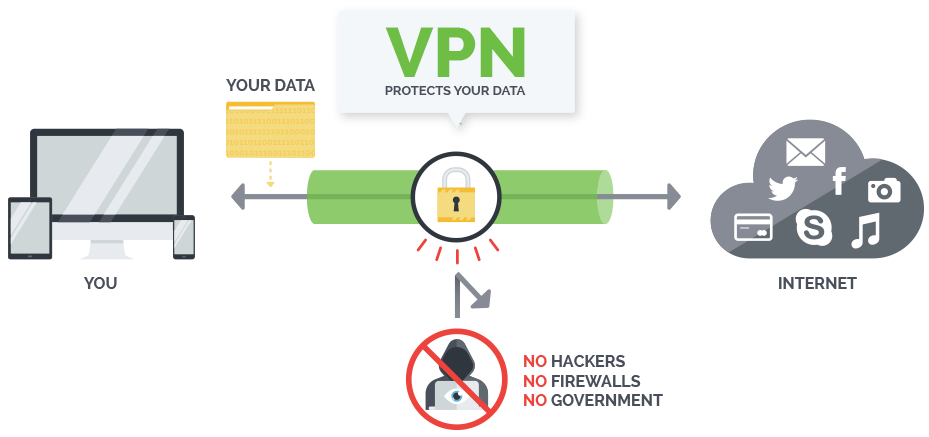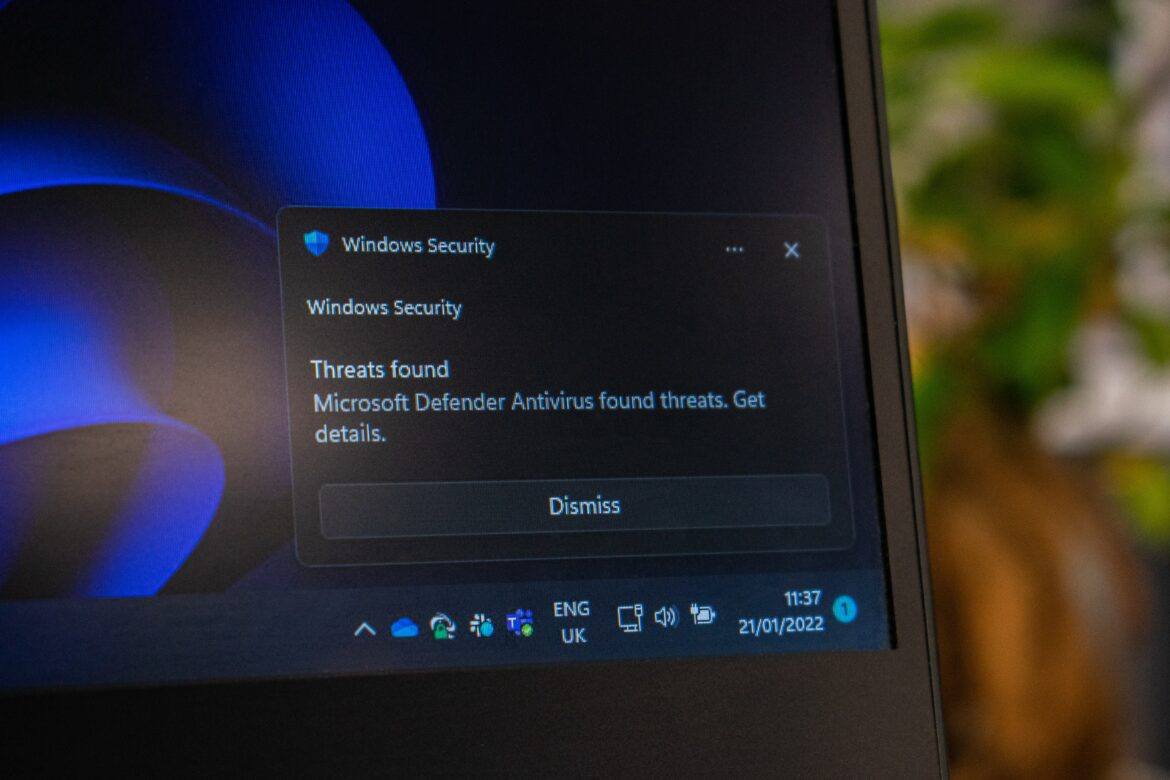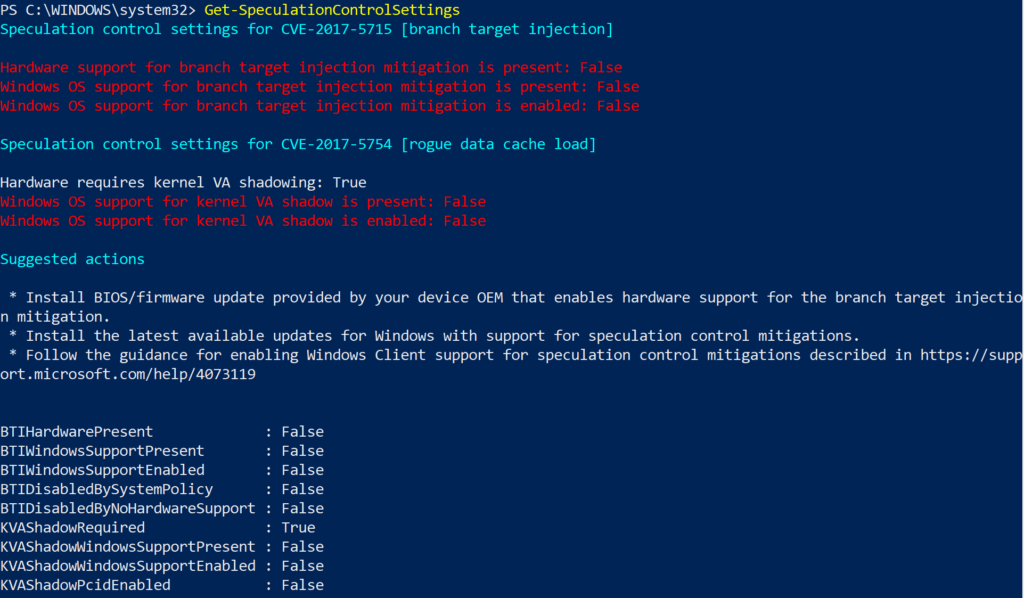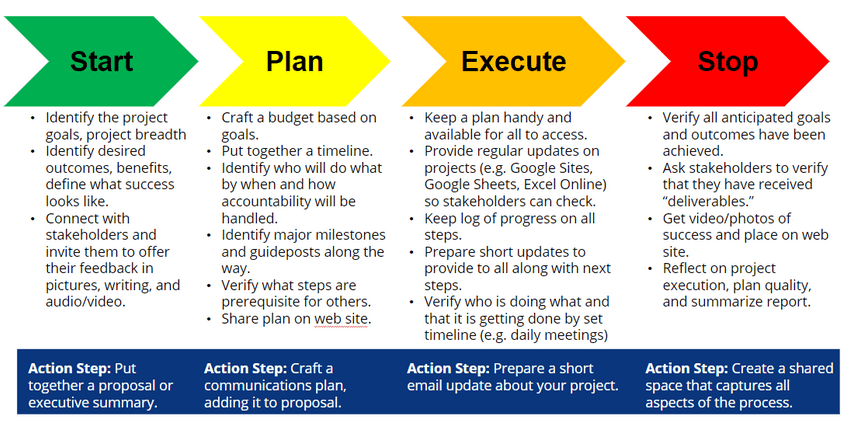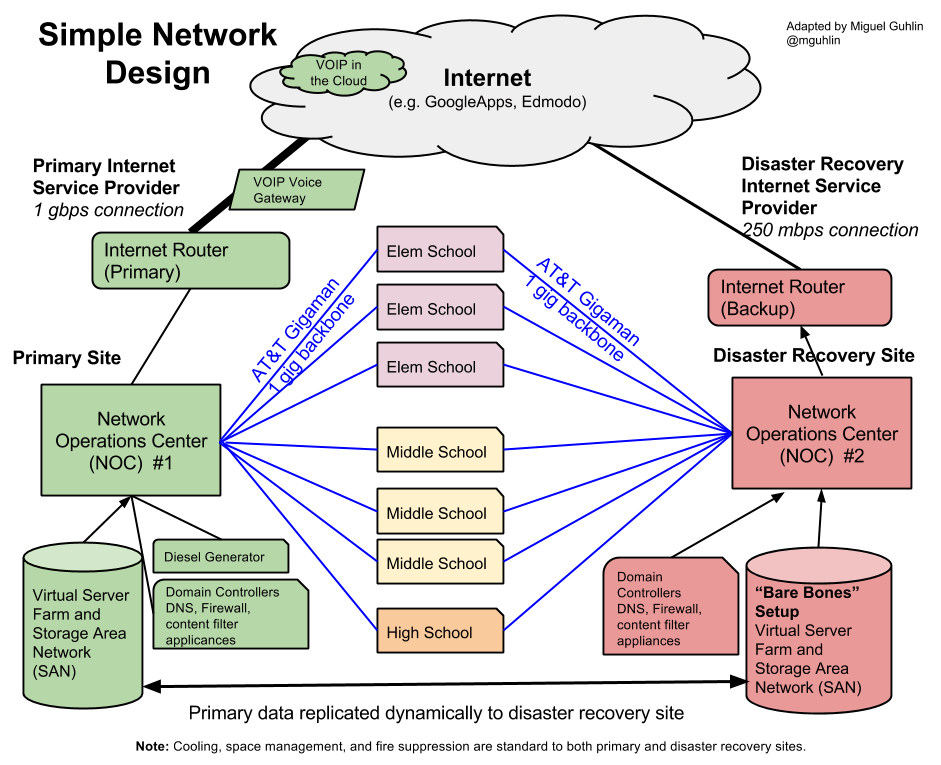Stay informed on cybersecurity in education. Discover tips, tools, and strategies to protect schools, educators, and students online.
It’s almost impossible to overstate the impact of technology on the lives of students today. With the ever-increasing popularity of social media platforms and online games like Fortnite, children are spending longer than ever before online.
Despite this, children and teenagers are often left with little-to-no understanding of basic internet safety and cybersecurity practices. Rarely covered in school, students at risk from a range of threats. From cyberbullying and screen addiction to inappropriate content and stolen personal information, it’s vital that educators help students become more cyber aware. This article will provide four steps to help create more cyber secure students.
1. Introduce the Issue Early
As many as 43 percent of children between the ages of two to four in the US now have access to a tablet. This makes teaching students about technology and cybersecurity from the start of their education essential. To explain the issues to young children in a way that they’ll understand, stay clear of complicated jargon and use real-life scenarios to explain how the internet works and the risks associated with it.
Advise your students against doing anything online that they wouldn’t do in real life. This could include a comparison between accepting a friend request from a stranger and talking to them online to talking to a stranger on the street. By using familiar concepts, your students will be able to grasp the fact that the internet, like real life, poses certain dangers that shouldn’t be ignored.
2. Teach Best Practices at School
While using technology in school, ensure that students carry out basic cybersecurity best practices. This way, it’s more likely to become a habit that’s maintained when outside of the classroom.
Creating strong passwords is a vital step to securing your information online. To help educate students, make sure that any accounts accessed on school devices require a strong password which contains symbols, uppercase and lowercase letters, and numbers.
Another essential piece of knowledge that students need to be armed with is that their activity online does not simply disappear. Posts on social media accounts and other digital activity will quickly build up. Though many students will not be concerned by this prospect, it’s imperative to educate students about how their digital footprints can lead to damaging repercussions relating to job prospects and college applications.
Finally, a lesser-known risk comes from the use of public WiFi networks. These can be found everywhere from libraries to cafes and pose a number of significant risks, including lost personal and financial information. To mitigate these risks, ensure that your older students understand what makes a trustworthy VPN and how basic internet encryption works.
3. Talk About Sensitive Issues
An incredible 95 percent of teenagers in the US now have access to a smartphone. This has resulted in the rise of a number of new issues that need to be addressed in school. From cyberbullying to sexting, it’s important to explain the dangers and repercussions of such activities to students.
Ignoring these sometimes uncomfortable issues does not solve them. Further, issues such as screen addiction can have a dramatic impact on a student’s academic potential, so it’s important to create an environment in which students feel comfortable and supported by their teachers.
4. Educate Parents
Educating children about how to stay safe online is not just something that has to happen at school. To create a truly holistic internet safety program, parents may also need to be educated. Holding online safety workshops at school to help educate parents about internet safety best practices is a good way of ensuring that when the student’s leave school, they remain safe online.
Advise parents on how best to restrict age-inappropriate content at home, such as installing a child-friendly browser or enabling Google safe search. Without educating parents, it’s unlikely that your strategy will be fully implemented or successful.
Conclusion
Ultimately, keeping students safe online requires ongoing attention and effort from educators. Throughout their education, they will be introduced to several different types of technology and the threats will change over time. However, with the proactive involvement of educators and parents throughout the process who understand basic internet safety and cybersecurity practices, there is a greater chance that students will remain cyber secure.
This is a guest blog by Sam Woodhams. Sam is a researcher at Top10VPN, an independent cybersecurity research group and VPN comparison website. He writes about issues of digital privacy and cybersecurity to help protect vulnerable communities from digital threats.



 As of 2004, Cyber Security Awareness Month has been celebrated in October. This month is sponsored by a division within Homeland Security (the
As of 2004, Cyber Security Awareness Month has been celebrated in October. This month is sponsored by a division within Homeland Security (the 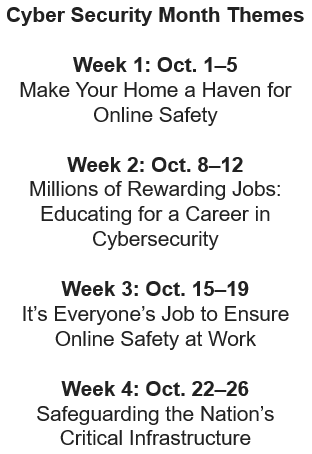 Weekly Security Themes
Weekly Security Themes

